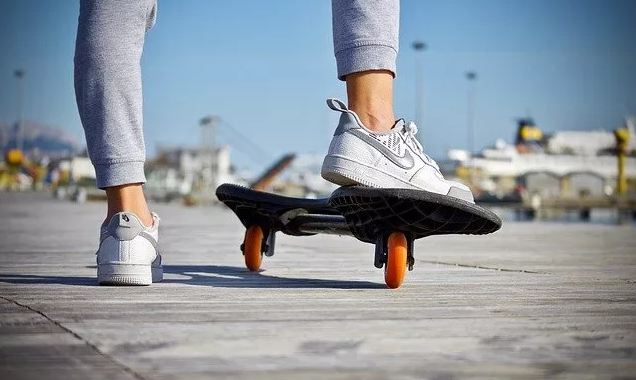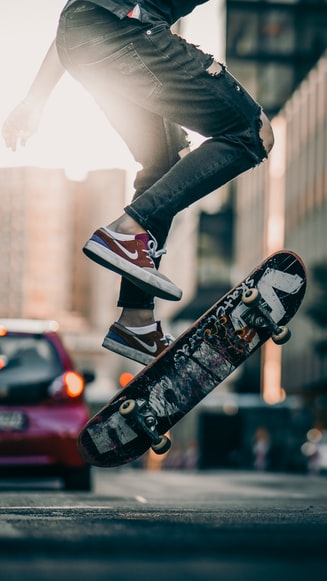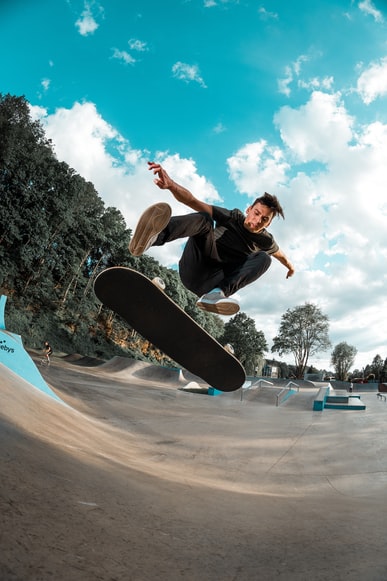Skateboarding first appeared in the 1950s and rapidly became linked with the surf culture of Southern California. In the early years, all skateboarding took place on streets, sidewalks, pathways, and plazas. In the 1950s, skateboards built from recycled roller skates were all the rage. The 1960s were manufacturing skateboards. Skating over more challenging terrain became possible in the 1970s because of the introduction of urethane wheels, which helped skateboarding regain national prominence. We saw the first skateboarding parks created during this period.
Concrete was molded into circular bumps, channels, and bowls that resembled empty swimming pools and moguls in these early skate parks. Wooden halfpipes began to appear on television and in backyards about the same time, letting viewers have a better view of the action. Skateboarding reached its pinnacle of popularity.
Skateboarding Details
| Category: Competition, Extreme Sports, Outdoors, Physical | Time: 30-60 min | Skill: Lots |
| Initial Cost: $$$ (101-500) | Space: lots | People: alone, small |
| Long-Term Cost: Low | Makes Money: No | Location: indoor, outdoor |
What is Skateboarding?
Skateboarding has evolved into a multi-billion-dollar industry that has impacted millions of people worldwide as an art form and a sport from the 1950s to 2020. Skateboarding has established its museums, been honored with its hall of fame, and created a self-documented history, securing a unique position in the heart of freedom culture.
Why is skateboarding so interesting
Skateboarding is a unique activity that appeals to a wide range of individuals. It’s more akin to an art than a sport. As a result, many enthusiasts are drawn to skateboarding. Skateboarding is a sport that is popular all over the world.
As a result, if you’re doing it as a hobby, you may constantly develop your talents and eventually turn them into a sport. Additionally, the regular tournaments feature a substantial prize pool, making it easier to turn it into a profession rather than simply a pastime.
So, if you’re searching for a pastime that you can do in the city, skateboarding is one of the best alternatives.
Benefits of skateboarding
Some of the benefits of skateboarding include:
- Can be practiced in an urban landscape
- Easy to practice
- Innovation possible
- Cheap hobby to pursue
How to get started with skateboarding
When it comes to skating, the first thing to bear in mind is selecting the right skateboard. If you’re searching for an average skateboard size, it’s approximately 7.75 inches. As a result, the first thing you must consider is selecting the right skateboard. Once you’ve mastered the art of choosing the proper skateboard and have grown accustomed to it, doing tricks will become quite simple.
Skateboard tricks
You need to always start with the basic tricks like:
- Ollie
- Nollie
- Kickflip
- Heel Flip
After you’ve mastered the fundamentals, only then can you consider inventing.
Basic Skills
Stance – When it comes to the fundamentals of skating, the first thing you need to know is your most comfortable posture. Is it comfortable to stand on your board and envision yourself moving forward? Your stance is normal if you like to stand with your left foot in front of the board and ‘goofy’ if you prefer to stand with your right foot first. It makes no difference what your position is, and whether you are regular or goofy is all up to you. Don’t get offended if others call you silly.
Rolling and tic-tacking – After you’ve figured out your posture, you may start rolling. Tic-tac is the most excellent technique for skating novices to build momentum. Tic-tacking is when you put a little weight on the rear wheels, lift the front wheels off the ground slightly, and tap the wheels to the left and right with your hips. You’ll feel like you’re doing a hula-hoop routine, and, ideally, you’ll be able to go ahead.
Pushing – You can attempt moving when you’re comfortable standing on your board while it’s going and want to go a little quicker. Using your rear leg is the most excellent technique to push. You should begin rolling faster if you maintain your front foot near the front truck bolts and facing forward, plant your rear foot on the floor, and drive your body forward.
Stopping – One of the most crucial aspects of skating fundamentals is understanding how to stop! For beginners, there are two options: first, you may stop by placing one foot on the floor like you did when pushing. The alternative is to lean heavily on the rear kick-tail, scratching the board on the floor and coming to a halt. You’re almost there once you can roll, turn, and stop comfortably. It won’t be long until you gain confidence and can introduce new skills and fundamental tricks.
Tricks – The final step in mastering the foundations of skating is to master some tricks. Learning the manual is an excellent way to begin. This technique is simple and a perfect place to start, but if you can hold it, you’ll be able to combine the more complex combination moves you learn later. Apply pressure to the back kick-tail of your board on manual until the front rises off the ground, and you’re just riding on two wheels. Pulling off tricks may look simple, but the key is to hold the manual in your hand as long as possible while traveling without crashing into the back of your board.
Cost of Skateboarding as a Hobby?
A skateboard can cost anywhere from $75 to $150, depending on the quality of the components you choose. The total of your skateboard is made up of high-quality ingredients. Shoes, skate parks, safety gear, and clothes all add to the total expense.
Conclusion
Practice makes perfect, and this belief can be lived and applied to skateboarding. The more you practice, the more you will sharpen your skills and, surprisingly, increase your endurance. Every single time you might fall can teach you to outgrow the pain and become resilient. Not surprisingly, skateboarding can be relaxing and an enjoyable hobby to bring joy to your life and leave no space for stress.


